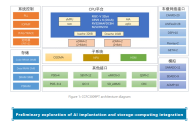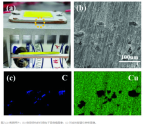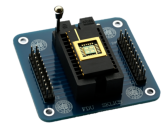Actively embracing RISC-V+AI, NationalChip Technology's high-performance automotive intelligent domain control AI MCU chip has completed design and entered the tape-out trial production stage.
NationalChip Technology has launched the CCFC3009PT, a landmark high-end automotive AI MCU chip based on RISC-V architecture with a 6+6-core design (6 main + 6 lockstep cores, configurable for user needs). The chip delivers over 10,000 DMIPS computing power and integrates a dedicated NPU (Neural Processing Unit), making it ideal for intelligent automotive domain control applications.

Main Features:
- Use of 22nm RRAM memory technology, offering triple improvements in storage density, read/write speed, and power efficiency over traditional solutions.
- Deep integration of AI capabilities via "hardware acceleration + toolchain adaptation," enabling developers to use proven edge AI methods with reduced entry barriers.
- A novel RRAM-NPU co-design approach that combines high-performance NPU logic with in-memory computing using RRAM arrays. This reduces data movement energy and enables more efficient matrix operations (e.g., matrix-vector multiplication) for neural networks—laying the foundation for future integrated storage-computing AI platforms.
Core Application Scenarios:
- Radar Signal Processing: Enhances object classification, free-space segmentation, and micro-Doppler analysis to improve perception accuracy ("seeing and understanding" objects).
- Battery Management System (BMS): Enables accurate health estimation, cell balancing optimization, and thermal runaway prediction.
- Motor Control: Supports real-time parameter self-tuning and fault prediction for improved efficiency and safety in electric steering/brakes.
- Sensor Fusion & Decision-Making: Acts as an intelligent gateway in domain controllers, fusing radar/camera data and enabling local decisions (e.g., detecting driver fatigue).
Forward-Looking Features:
- Native support for virtualization to enable efficient multitasking and dynamic resource management.
- Onboard network routing module that handles CAN-to-Ethernet packet forwarding, freeing up CPU resources.
- Advanced security with HSM subsystem, including quantum-resistant cryptography compliant with FIPS 203/204 standards.
Strategic Significance:
The CCFC3009PT embodies the trend of "edge AI" and intelligent sensing in smart vehicles—bringing AI intelligence to sensors and subsystems for faster, more reliable, real-time processing. It reduces central compute load, improves system efficiency, and is a key component in building "software-defined cars."
This achievement marks a major step forward in China’s domestic automotive MCU development—pushing the industry toward high-performance, intelligent, secure, and energy-efficient solutions. NationalChip plans to expand its chip ecosystem through hardware-software collaboration, aiming to deliver competitive, next-generation AI-enabled automotive electronics for future smart vehicles.
This achievement marks a major step forward in China’s domestic automotive MCU development—pushing the industry toward high-performance, intelligent, secure, and energy-efficient solutions. NationalChip plans to expand its chip ecosystem through hardware-software collaboration, aiming to deliver competitive, next-generation AI-enabled automotive electronics for future smart vehicles.


